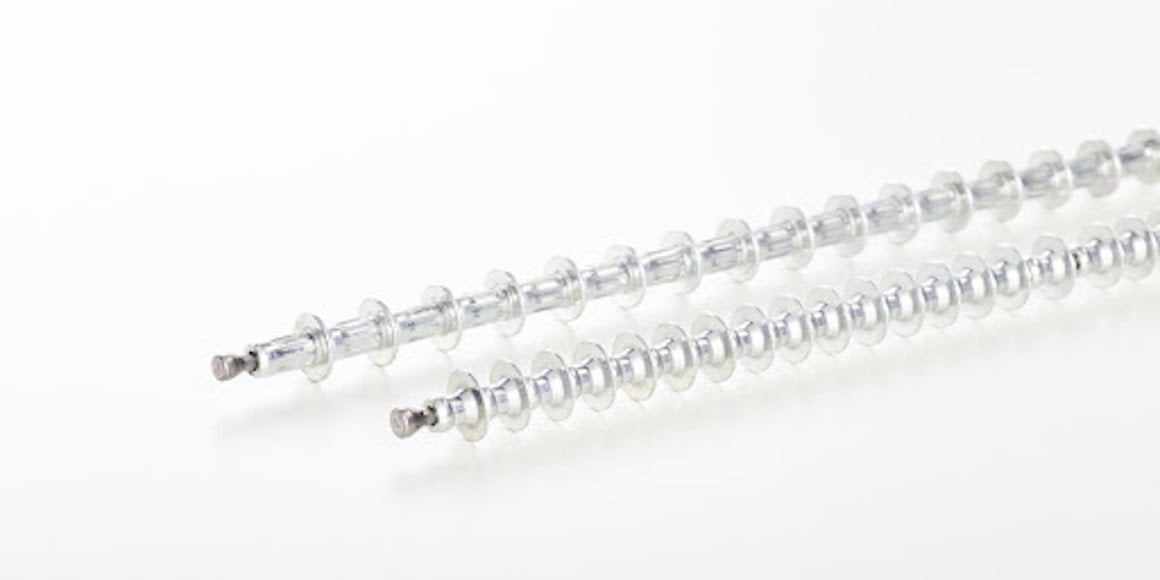
When it comes to fastening systems, speed fasteners are in a class of their own. Where most fasteners are loaded individually and set one by one, speed fasteners are packaged in a belt for rapid, consistent installation.
Speed fasteners are specifically designed for rapid installation on the production line. They are commonly used in applications such as aircraft manufacturing, automotive assembly, truck bed manufacturing, or any other application where you want to ensure efficient, error-free installations.
Since speed fasteners are in a class of their own, the criteria for choosing quality rivets and rivet tools are different. Knowing what to look for in speed fasteners will make it easier to select the best rivets for your production line or project.
Understanding Speed Fastener Configurations
Not surprisingly, speed fasteners are designed for fast installation by eliminating the need to load the fasteners one at a time. Speed fasteners are blind rivets packaged in strips of belts that automatically feed the fasteners to the rivet tool. Using a speed rivet magazine makes it easy to install multiple fasteners of the same type quickly, one after another. In fact, an unskilled laborer can set as many as 2,000 speed rivets in an hour. Speed fasteners also ensure consistent fastener installation with fewer errors.
A typical speed fastening system has a reusable mandrel that is loaded with a paper cartridge that holds multiple rivets. Once you peel the paper away, you are ready to go,
Speed fasteners are also designed to create less waste. To improve efficiency, speed fasteners don’t use a break stem system, so they can be installed quickly with less waste. According to Avdel, which makes some of the most popular speed fastening systems on the market, you can reduce cycle time to less than two seconds by eliminating the break stem. Most workers can set up to 60 rivets per minute.
What to Look for in Speed Fastening Systems
When choosing speed fasteners or speed fastener tools, consider how you plan to use the fasteners and the primary reason you have chosen a speed fastener in the first place. Most people choose a speed fastener because they want greater efficiency and uniformity during installation. They also choose speed fasteners because they offer greater longevity.
When choosing the speed fasteners themselves, consider characteristics such as the material used for the rivets, length, diameter, and finish. For example, for light metal assemblies such as airplanes, you may want to use fasteners made of aluminum. Specialty fasteners made of brass or aluminum are commonly used in electronics to attach circuit boards.
Speed fasteners are made of different metals for different applications, such as connecting sheet metal, fiberglass, plastics, and so on. And they are available in different finishes. For example, you may want to use coated or stainless steel rivets to prevent rust.
Speed rivets also have different head profiles, each offering a unique finish. Rivets come with domed heads, low-profile heads, and countersunk heads.
There are additional considerations to make when choosing speed fasteners. For example, will the rivet need to be removed, or is a threaded standoff pillar required? Do you need a high clamp or a wide grip for the installation? Will you need a wider head or controlled set pressure for softer materials?
Avdel offers a comprehensive line of speed fasteners and tools. Some of Avdel’s most popular speed fasteners are the Neospeed, the Briv, the Chobert, the Grovit, the Rivscrew, the Avtronic, and the Avsert.
How Speed Fasteners Work
Speed fasteners are faster because each rivet is fed automatically, saving the time needed to load each fastener. Speed fastening tools typically have longer nose shafts that are used with the preloaded speed rivet magazines. The magazine reduces the amount of rivet handling required and eliminates problems such as loose rivets. Once loaded, the speed fastener tool automatically feeds a new rivet tool into position after each rivet is installed.
There are various types of speed fastener tools. There are handheld tools for smaller jobs where you only want to install a few rivets at a time. Handheld speed rivet tools are like any other handheld tool but with a longer nose assembly.
If you plan to set more than 10 rivets at a time, it makes sense to use power tools. Single-head workstations make more sense if you install higher volumes of the same type of rivet. Most workstations have either a movable or fixed arm. Assembly workstations are designed to handle two or more rivets at the same time and can be customized depending on the manufacturing application.
Visit the Bay Supply Marketplace for Your Fastening System Needs
Speed fasteners can be ideal for manufacturing and related applications, but you still need to have the correct type of speed fastener for the application. You want the right fastener with the correct dimensions, head type, and finish to ensure your installation will be consistent and last a long time. You also want to choose a speed fastener tool that delivers maximum efficiency without too much power.
To see what speed fasteners are available, visit the Bay Supply Marketplace. You’ll find a wide range of speed fasteners and tools. Contact the experts at Bay Supply if you need guidance.




Comments